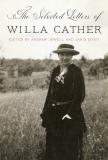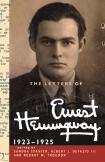Epistolary Treasures: The vanishing art of letter-writing
There have been many famous letters and letter-writers in history. One thinks immediately of Cicero, who made it an art form. Then, of course, we have St. Paul, who filled his letters to early Christian communities with advice and doctrine, news from the front and occasional scoldings. One also thinks of Henry VIII writing to Anne Boleyn, when Henry looked good to her. Or John Keats writing Fanny Brawne from his deathbed. Or the famous letter written by the Italian hermit Peter Morrone to the dean of the College of Cardinals in 1294, which led to Peter’s election as Pope Celestine V.
People once maintained relationships that were primarily epistolary. Loves were lost and found with the arrival of letters. A man might run to the daily post, anxious to discover if his marriage proposal was accepted, a woman, to see if one had been offered. Letters were harbingers of joy but also dread and surprise. Millions of mothers and fathers learned of the death of their sons at war from an arriving letter. Just two generations ago, letters were the primary means of confession, from one friend to another, and the prefered way of sending and receiving serious news, better than the telephone.
This all began to change in 1995, as e-mail replaced letters at a rapid clip. As a result, our primary means of communication with one another has been easily disposed of and replaced by one that is mostly absent of format, tone and geographical relevance.
This is why we might want to pause and consider a batch of excellent books published in the last year. These volumes often require decades to collect, collate, research and produce—and we have a flurry of them offering epistolary treasures. There will come a time in the future when we will have no more of these. Rest uneasy; your favorite contemporary novelist or theologian is not writing or receiving collectible correspondence right now.
. . .
Letter-writing became more affordable on March 3, 1845, with the U.S. Postal Act. Congress essentially broke up the monopoly of the Postal Service by regulating prices, making the mail accessible for the average Joe. It is no accident that we do not often think of writers or public figures of modest means in previous centuries as letter-writers. Letter-writing had not come into its own in the days of Jonathan Edwards and Phyllis Wheatley. Counting from the Postal Act until the late 20th century, one might calculate the golden era of epistolary communication at just under 150 years.
We’ve just seen the publication of the first volume in what will eventually be three to include every extant piece of correspondence associated with Henry David Thoreau, whose editors explain in their historical introduction how much the author of Walden benefitted from the Postal Act. There was a direct correspondence between it and Thoreau’s blossoming into one of the most interesting letter-writers of his century. Those same editors have chosen to publish not only Thoreau’s extant letters but those written to him. The result is a thorough reconstruction of his biography, which should appeal to anyone with an abiding interest in the most important 19th-century American writer of nonfiction.
The important role of an editor in selecting, compiling and annotating a writer’s letters comes through clearly in all of these volumes, most of all, perhaps, in this new book on Thoreau. The letters that he wrote to his sister show a warmth and humanity that would be unfamiliar to the thousands of late 19th-century readers who only read a collection of his letters collected and published by Ralph Waldo Emerson soon after Thoreau’s death. Emerson’s volume included only the more stoical Thoreau, because that’s the man Emerson wanted people to remember.
Also interesting is how reading a writer’s letters can lead to a rapid re-evaluation of the writer. I now appreciate Willa Cather much more than I did before. A brilliant woman, she was clearly one of the most interesting figures of her age, whether she was writing about Nebraska, New York City or Quebec.
The most intimate remarks are written in letters from one friend to another. This is why many writers have restricted access to, or destroyed, their correspondence. Willa Cather is one example. The public hadn’t seen more than a handful of her letters since she died in 1947, which explains why the chunky volume of what has just been published has received so much attention. Other writers, including Somerset Maugham, destroyed all their correspondence, leaving nothing to chance. Bess Truman famously burned about 1,300 letters that she had written to her husband, Harry, just after the former president’s death. Alternatively, it is common for access to be restricted for a quarter century or so after the death of the writer, so that most of the people mentioned in the correspondence will also have died.
We, of course, love to look in on the intimacies in letters, hence writers’ desire to restrict us sometimes. Toward the end of her productive life, Cather remarked to her brother on Nov. 6, 1938: “As for me, I have cared too much, about people and places—cared too hard. It made me, as a writer. But it will break me in the end.” In fact, we witness a new Cather in these letters, a picture that enlightens the novels, making me want to read them again. There have long been debates about her sexuality, and she still says nothing about it in her correspondence, but I found a fascinating remark to one of her friends from college: “Life is too short for love anyway, one is a fool to be an exile.”
Catholic themes are illuminated in Cather’s letters, too. Her middle American readers were often concerned about what they perceived as the novelist’s Catholic leanings in the later novels, and this collection shows Cather responding to those queries. “You asked me…whether I were on the road to becoming a Catholic. By no means! I do, however, admire the work of the Catholic missionary priests on this continent,” she wrote to the president of Czechoslovakia.
The fifth of six planned volumes of Robert Penn Warren’s letters was published in late 2011. The final volume appeared last December. A three-time Pulitzer Prize-winner, Warren is largely forgotten today. He deserves better, although only one of his novels, and just a handful of poems, are included in the current canon. My only complaint with the volume under review is about the repetition. Warren wrote a lot of letters, often repeating verbatim judgments and observations from one correspondent to another, and when these repetitions are not edited out, they have a cluttering effect.
Fortunately, none of the books under review suffer from the self-consciousness of writers who pen letters to one another with a view to future publication. This is not always so. A reviewer, for instance, in The Times Literary Supplement recently took a volume of letters between Kingsley Amis and Philip Larkin to task for this (10/18/13). The reviewer observed, “The personae these supposedly private letters create are as shrewdly crafted as anything in their authors’ poems or novels.” This tendency has been around since Pliny the Younger was writing his letters, as if for future publication, in Rome in the first century.
No one was further away from letter-writing for publication than Ernest Hemingway, whose second volume of correspondence, covering the Paris expatriate years, 1923 to 1925, forms the most purely enjoyable book of those considered here. Hemingway wrote on every imaginable form of paper, almost always quickly, communicating as brashly as he lived his life. “EXCUSE THE UPPER CASE TYPE BUT THE DAMN MILL STICKS OTHERWISE AND I WANT TO WRITE THIS FAST,” he sent to a friend in April 1925. But he also very often comes across as the bigoted jackass that we know him to have been.
Reading the letters of our favorite writers can be a quick way to dash our appreciation of them as people. In that vein, the Catholic novelist J. F. Powers comes across here as a worrying, often bitter, self-involved annoyance to many of his friends and colleagues, while T. S. Eliot almost shines through his letters to correspondents around the globe with wisdom gained early and intelligence.
There is one volume that gives me a bit of hope for the genre. Perhaps there is a future for looking in on what writers have to say to each other and to their friends with the approach taken by the editors of The Selected Letters of Robert Creeley, the modernist poet, soon to come from The University of California Press. I have not seen it yet, but I’m told that they are including faxes and e-mails in addition to traditional letters on paper. But my suspicion is that this is approach will not be widely repeated. We simply do not communicate in short form e-mail the way we once did, pen to paper.
This article also appeared in print, under the headline “Epistolary Treasures,” in the February 24, 2014, issue.









